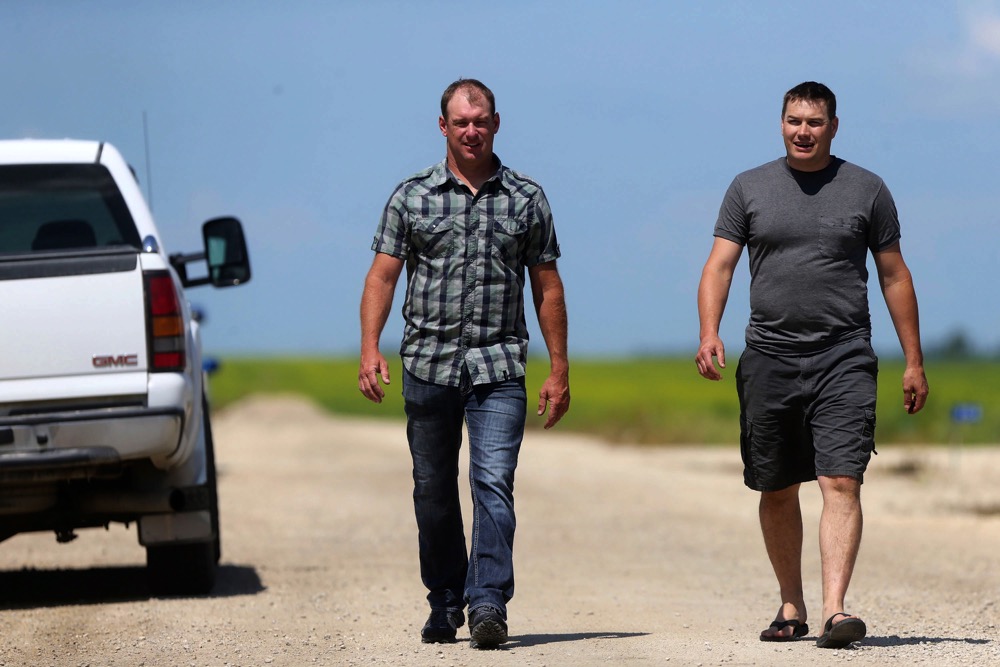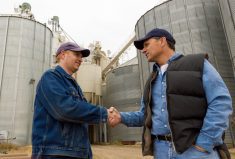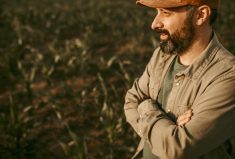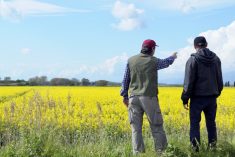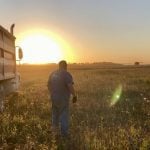It’s just after 3:30 in the afternoon when a lumbering orange school bus pulls into the yard at Braun Grain Farms, 20 or so kilometres northeast of Winnipeg. “The kids are pretty spoiled here,” says their mom Kristy Boonstra as they bound off the bus and into the shade of a treed lawn, complete with vegetable garden and freshly cut grass.
It’s the kind of country scene that Kristy’s husband Albert Boonstra and his business partner, friend and cousin-in-law Sean Braun hope will entice city folks and others to buy into their new venture — a housing development on recently rezoned farmland.
Read Also

Will investments in defence benefit Canadian agriculture?
A bump in Canada’s NATO spending commitments could lead to infrastructure investments that would benefit rural areas
“We didn’t really think of ourselves as developers,” says Boonstra later, coffee in hand at his kitchen table. “We never had really gone down that road, we were just farmers… well, I shouldn’t say ‘just’, but we were farming.”
It was an unexpected opportunity to buy 135 acres of farmland in 2009 that changed all that, he says. They had bought the property to expand their existing, multi-generational farm business, but it soon dawned on both men that a little patch of the newly acquired farm where it abutted the village of St. Francois Xavier might make a better subdivision than cropland.
“Just because of the location, we thought that maybe 10 or 20 years down the road it could be developed,” explains Braun.
But before they knew it, the pair was meeting with officials from the rural municipality, learning the ins and outs of home construction, and cursing some builders while praising others. They were also borrowing a lot of cash, making their online video debut, and dipping their toes into social media.
There is one thing, though, that they still haven’t done.
“We haven’t made any money on it yet,” says Boonstra with a laugh.
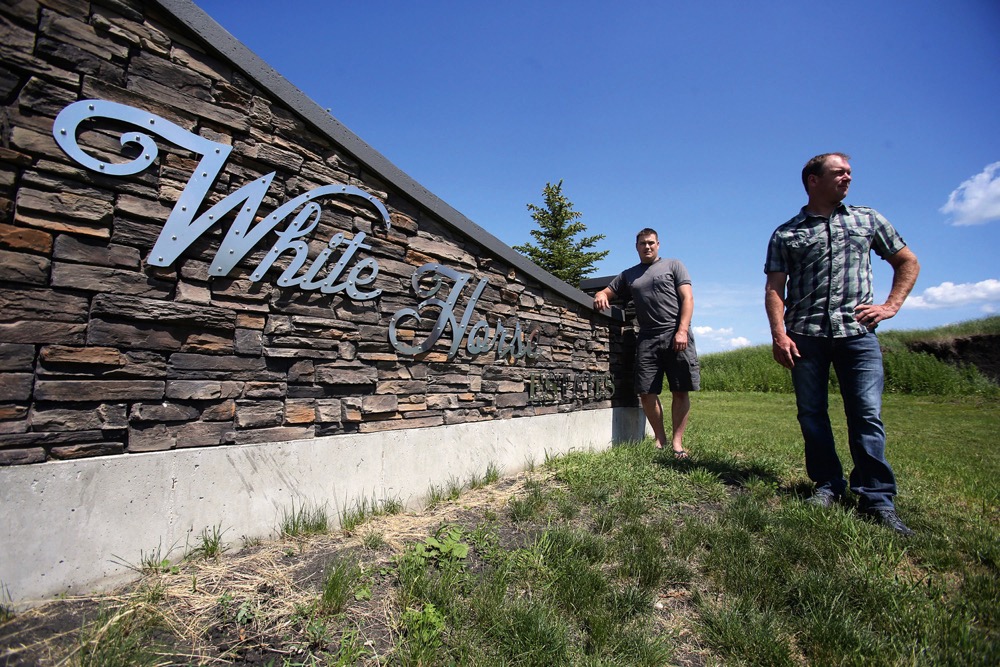
Not that either of them are losing sleep over it. If there is any aspect of life as a developer that their farm careers has prepared them for, it is borrowing large sums and taking on risk, says Braun.
“The ability to take on debt and not even blink an eye, to just keep going, I don’t know if that is a positive exactly, but it’s a skill we have,” he says.
Boonstra agrees that being comfortable with debt and knowing how to manage it has been key to the process. “The ability to see the big picture and not get wrapped up in the here and now is important,” he stresses. “We know we built something of value, it’s not selling right now, but like farmland it’s only going to increase in value and that’s a skill we learned through farming.”
Back in 2009, however, the farmers hadn’t even begun to seriously consider developing what is today White Horse Estates. It was only when the municipality of St. Francois Xavier approached Braun and Boonstra with a plan to rezone the land as residential that things picked up speed.
Located only 20 minutes west of Winnipeg, just off the Trans-Canada Highway, the municipality hoped to inject more life into the village while also increasing the local tax base.
“We want to encourage growth, more people living here,” says Reeve Dwayne Clark, who has held the position for the last two years. He says while he wasn’t reeve of St. Francois Xavier at the time Braun and Boonstra struck their development deal, developing new subdivisions is a continuing priority for the municipality, which is one of the fastest growing in the province.
Between 2001 and 2011, St. Francois Xavier saw its population jump by 21 per cent, Clark says, “So we don’t want to put up a lot of obstacles when it comes to (development).”
To that end, the municipality is helping out at White Horse Estates by maintaining the roads there, even though the development agreement doesn’t require them to do so until the project is complete.
“We had it pretty easy because we had a (rural municipality) on board, so we weren’t pushing anything uphill, but it was still very hard and very difficult and very cash hungry, which is similar to farming,” says Boonstra.
Even so, the duo still weren’t convinced they would take the project all the way to completion, figuring they would get all necessary permits in place, then seek an established developer to take over. But finding a developer willing to venture outside Winnipeg proved difficult, and those that did expected a huge share in profit.
“And we still had to take the risk on with them,” says Boonstra. Under the deal, he and Braun would put up the land, the developers would put in the cash to cover development, and profits would be shared 50/50. “But we’d have no say in that really,” says Boonstra, “and you’re leaving a lot of money on the table.”
It was then they began looking at what it would take to take on the project without the help of a developer, and as a first step and they began work on a five-year business plan.
“We started to look at it more closely and asked, how hard is this? We just had to hire someone to do the work and we already had a plan… which was an accepted plan by the planning district,” Boonstra notes.
But that also meant finding a financial institution willing to loan two farmers money to break new ground, literally.
Boonstra and Braun first approached Sunova Credit Union, but while staff there provided great advice and gave them solid numbers to work with, the credit union was only prepared to lend cash based on the land’s farm value, not its development value. Before long, talks fizzled out and the would-be developers were back at the drawing board.
While recalibrating, the pair reached out to local realtors and embarked on what turned out to be a key aspect of securing financing: pre-selling lots in the development. Then, using an appraisal done by Sunova, plus information provided by the realtors and their own research, they approached the Starbuck Credit Union.
“They are local and we had heard from our accountant that they would work with local people and kinda stick their necks out a little bit for us,” says Braun. “And when we went to them it went really well.”
Starbuck Credit Union — now Noventis Credit Union — agreed to loan them 60 per cent of the development value of the land. It was now 2011 and the pieces were starting to fall into place just as the housing market rebounded from the global downturn of 2008. By the end of that year they received conditional approval for a 36-lot subdivision from local government, and in 2012 shovels were in the ground.
Roads were built, municipal sewer and water extended, power brought in and homebuilders brought onboard to fulfill the pre-sale purchases. Braun and Boonstra then oversaw the construction of two show homes in 2015.
“Having the builders signed up for the pre-sales, that legitimized our business plan and put real numbers in that people were willing to pay,” explains Boonstra. “So once the lending was in place, we felt we didn’t need to partner up with a developer anymore.”
Caution wasn’t thrown to the wind, however. The final business plan called for 65 lots to be built in three phases. The first phase offered 15 lots, 11 of which now have houses on them, including the two 1,625-square-foot show homes, listed just shy of $500,000 each.
“Our stake in it was developable lots that were saleable, so we were trying to either sell to the builder or to someone private who can build their own house on it,” says Boonstra. “We did it in phases because of the cost, so we were careful about putting out cash.”
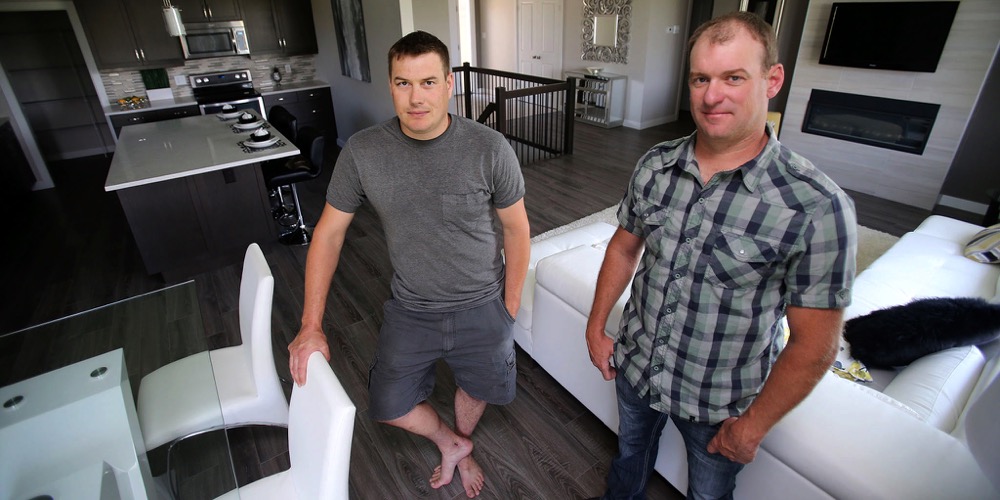
The decision to build 15 lots in the first phase was based on both finances and design concerns. Phase two, which includes an additional 20 lots, is complete and ready to go as well.
“We haven’t officially opened the second phase yet, but all the infrastructure is in — the road, sewer and water — so the lots are there ready to go, but we’d like to sell out phase one or most of phase one before we actually sell lots in phase two,” says Braun.
Boonstra adds that 80 per cent of lot cost is incurred before the lots hit the market. The final 20 per cent of development cost primarily comes from fees charged by the municipality once lots are listed for sale. Each lot is between a third- and a half-acre, and prices begin at $99,000.
“We might have jumped the gun on the second phase… we could have waited for another year, although it’s nice to have it there,” Boonstra says, noting the housing market has cooled again since White Horse Estates experienced its first rush.
Posing for the cameras
To drum up interest and sales, Braun and Boonstra have now ventured into the world of marketing. Working with Winnipeg-based Mindscape Studios, they have collaborated on a series of promotional videos that are as much about country life and the land as they are about White Horse Estates.
“We weren’t comfortable with it at first, to tell you the truth,” says Boonstra, with a shake of his head. “It’s just not our personality… farmers by nature are a little more humble and that is why sometimes we get a bad rap, because we don’t put our stories out there and tell people what we’re doing, we just go about our business.”
Braun agrees with a nod, saying, “we wanted to stay low key at first, but then we did realize we needed to get the story out there.”
Former journalist and Mindscape co-owner Gosia Fazio convinced them that telling their story was the way to go, even if it took some reassuring to get Braun and Boonstra in front of the camera.
“They were just terrified and they were each trying to throw the other one under the bus,” says Fazio, recalling their first meeting with a laugh. “But at the end of the day… the biggest strength they have is their connections to the community and who they are as people.
“Our way of looking at our clients’ needs really does revolve around the truth about who they are. I think it has to be the truth about who they are if you are going to really connect with people. That’s because people don’t really remember what you do, they remember why you do it.”
The end result involved not just Boonstra and Braun, but their whole families speaking about the deep roots they have put down through generations of farming, and how that influenced their decision to invest in the community by embarking on the development path.
“We jumped off that cliff and I’m really glad we did it,” says Boonstra, adding the experience has also given him a new appreciation for the need to tell farming’s story to new audiences. It’s something he plans to now apply to his farm business.
“I mean a lot of people don’t know what farming looks like, and they don’t always trust it, so getting our story out there with this, it applies to our farming as well,” he says.
But having the videos produced is only part of the marketing battle. It has also meant establishing a presence on social media, something that both Braun and Boonstra acknowledge they could be doing better at. They are also examining the possibility of more traditional advertising, like radio spots or even television ads.
Word-of-mouth has been their main strategy up until this point, with friends, family and neighbours getting the news out about White Horse Estates, in addition to realty listings and Facebook. Jamie Knox is a realtor representing the development and said the fact that neither Braun nor Boonstra have a background in development is also a selling point, albeit an unusual one.
“It was very unique to me, and when I first heard about the project, I was like, wow,” says Knox. “These people are the developers, but they are also your neighbours.”
Braun, who lives in the village of St. Francois Xavier, says that if people don’t like something, they know where to find you and you’ll hear about it.
“So we wanted to build something we can be proud of, we want to grow the community, increase the tax base, increase services, recreation,” he says. “This is something our names are attached to, my kids go to school there, so this isn’t just about a development.”
Although Boonstra adds that while the health of the community is a factor, they are ultimately making decisions based on business concerns.
It’s also about farming
Developing White Horse Estates, named for a white horse statue marking the turnoff to St. Francois Xavier, hasn’t meant a hiatus from the 8,000-acre family grain farm. Seeding, spraying, harvesting, planning, selling and shipping grain are still their main focus.
But given the balancing act they are undertaking, Braun and Boonstra both stress that having the support of their farm business partners — Braun’s dad and Boonstra’s father in-law — is paramount. That support may have been easier to garner because of one key business decision made early on in the development venture.
“I think it was important that we did it without any farm money,” emphasizes Braun. “It really legitimized it because we didn’t have to keep pumping outside money in. It’s totally separate from the farm business.”
And while the older generation may have raised their eyebrows a few times, Boonstra believes that good communication skills and mutual respect have kept everyone onboard. Good communication skills have also been integral to balancing the interests of the development’s new residents and Braun Grain Farms, which still farms the land directly adjacent to the new homes.
“For the people that we have sold to, they all like that it is in a rural area, next to fields,” Boonstra says. “I mean there will still be a problem if you drift onto their garden… but we’ve keep in constant communication with the people there and they like the view, they like seeing the crop come up and we’ve tried to communicate to them how it is all done.”
As for when their crop of houses will reach maturity, that remains to be seen. Both Braun and Boonstra know it could be some time before they see the fruits of their labour.
“You don’t make any money until your last 20 per cent of sales,” explains Boonstra. “All those sales before that actually go towards covering the cost, so you aren’t really going to make any profit until your last lots sell.”
And the date when those last lots sell depends on how many lots you develop, he adds, noting that they haven’t ruled out continued expansion once the 65 lots they have planned so far are sold. While the pair could have stopped at 15 lots, economies of scale prove an important incentive.
When it comes to specifics, the two farmers-turned-developers declined to go on the record with the exact investment they have made in the development so far, but repeat they are aiming for 20 per cent profit at the end of the day.
“I think our numbers have dwindled from where we started, so we are probably a little less profitable now, but not by a lot,” says Boonstra. “We’re trying not to force it, and it’s taking a little longer than we thought when we started, but I think a five-year plan was realistic.”
Some unexpected bumps in the road did slow the project down along the way. A decision to go with a smaller, local contractor at one point ended in the realization you sometimes need to go bigger to have the capacity you need, and one of the three homebuilders they partnered with went bankrupt after a personal crisis.
“We did kind of regret having that one builder there, but that is easy to say in hindsight because we needed him at the time and we needed those pre-sales for the lending we needed that to get off the ground,” says Boonstra.
Braun says that while putting on the developer hat has been an enjoyable experience, he isn’t quite ready to call himself a developer yet, even if he’s learned an amazing amount along the way. He does, however, have some words of wisdom for any other farmers looking to develop land as urban areas expand.
“Be prepared for it to go really slow, as far as selling lots… be prepared to put up a lot of money up front and be prepared for it to come back slowly,” he says. “We still think of ourselves as farmers first, I mean this hasn’t really taken off, so maybe someday when we start our next development we can call ourselves developers, but right now we are farmers first.”

